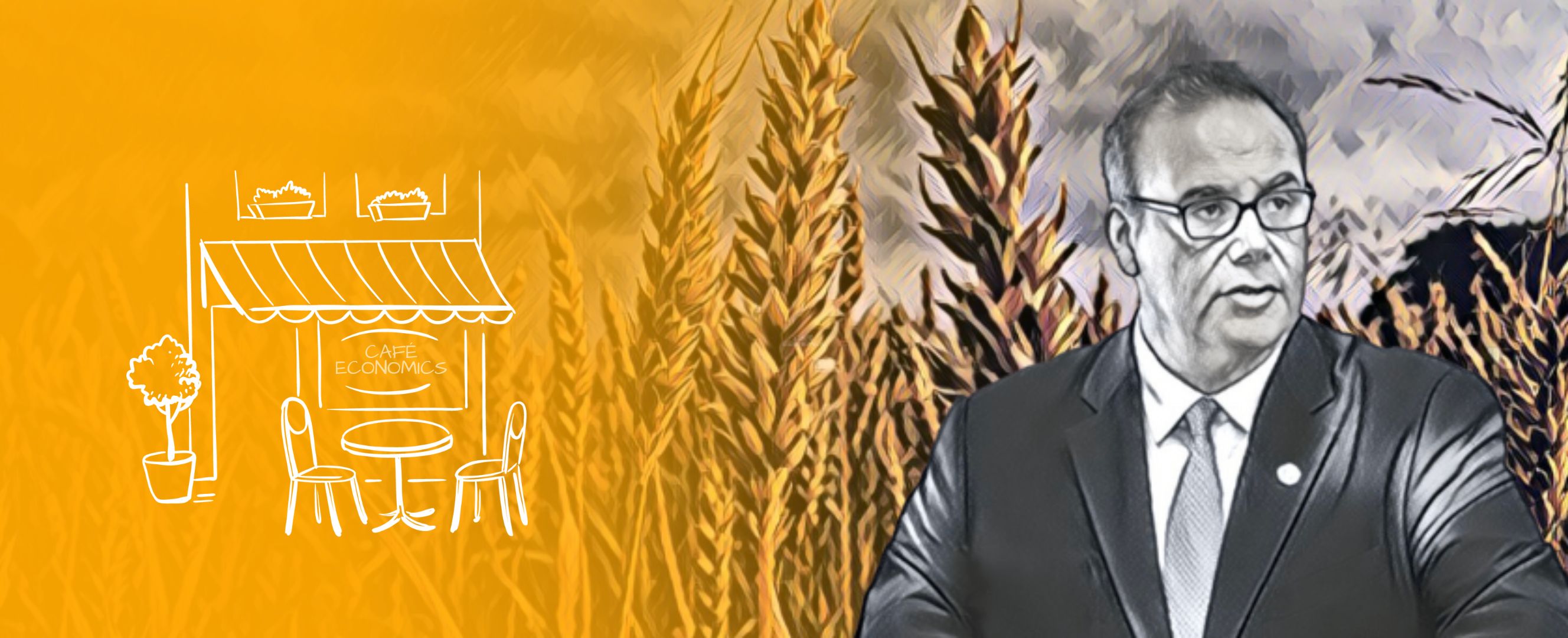FAO’s Maximo Torero Cullen discusses how global food supply difficulties could tip into a full-blown catastrophe
Because of high natural gas prices rising food prices could make the difference between life or death for millions of people around the world. Organizations such as the United Nations Food and Agriculture Organization (FAO) are closely tracking the effects of price hikes on global food security.
In an interview with F&D’s Bruce Edwards, Maximo Torero Cullen, FAO’s chief economist, says wheat and fertilizer supply shortages have driven up prices and increased food import bills for the most vulnerable countries by more than $25 billion, putting 1.7 billion people at risk of going hungry.
F&D: We know the war in Ukraine is affecting food supply in some parts of the world. What other factors are at play?
MTC: The main driver behind the food price problems we are facing is conflict; most of the countries in food crisis have internal conflict. The second is economic downturns; COVID-19 is one of the major reasons most poor countries are facing significant challenges. And the third, of course, is climate change.
The war in Ukraine has exacerbated the problem, as it stopped exports from two key exporters of cereals: Ukraine and Russia. Around 50 countries depend on these two exporters for at least 30 percent of their cereal imports. For about 20 of these countries, it’s more than 50 percent.
Another factor is that Russia is the world’s leading exporter of nitrogen, the second of potassium, and the third of phosphorus fertilizer. When it halted the exports of fertilizers, that drove up the prices—which were already high before the war—creating a significant problem for farmers.
So the impact on food-importing countries is twofold—they face a steeper food import bill and a higher cost of fertilizers. That is our major concern today. Because the cost of fertilizers has in some cases quadrupled, many farmers cannot afford them anymore, and that will be affecting the harvest this year and next year.
F&D: What is the impact on vulnerable economies?
MTC: In the case of Africa, the key net food importers are northern African countries—more than 50 percent of their wheat imports come from Russia and Ukraine. Sub-Saharan Africa is different, as it doesn’t have wheat as a main staple. They have cassava and rice. However, maize and wheat are used for feedstock.
F&D: What are your main concerns if the war in Ukraine continues?
MTC: If the war continues, in 2022 and 2023 we could potentially have a food access problem coupled with a food availability problem, because Ukraine and Russia would significantly reduce their exports, including fertilizers. This is a situation we have to avoid. Under the current conditions, we estimate Ukraine could reduce their exports of wheat and maize by around 40 percent, and Russia might do something similar.
We are also observing that, because of the increase in the cost of fertilizers, rice production has been affected for next year, and prices are starting to rise. In addition, a poor monsoon season is potentially affecting rice sowing in India. These developments pose risks because rice is a key staple around the world, including in sub-Saharan Africa.
If I had a say in which countries should have access to fertilizers, the key exporters of rice would be a priority, because they will supply the rice we need to minimize food access problems in the next year.
F&D: Your research shows that conflict accounts for 72 percent of the increase in food insecurity since 2016. How do you ensure that countries in conflict have access to food?
MTC: Countries in conflict are the most vulnerable because they are net food importers, in addition to having balance of payments problems. We are proposing a food import financing facility, which we hope the IMF will operationalize. Why is this so critical? Because it’s an issue that affects 1.7 billion people.
What we are observing in these conflict countries is, first, they are not importing what they need. Second, some are importing foods with low calorie content, which could create significant problems. Third, they don’t have access to finance because they are already too indebted. I am referring to Afghanistan, Burkina Faso, Burundi, the Central African Republic, the Democratic People’s Republic of Korea, Eritrea, Ethiopia, The Gambia, Guinea, Liberia, Mali, Mozambique, Niger, Rwanda, Sierra Leone, Somalia, South Sudan, Sudan, Syria, Togo, and Yemen.
We believe a food import financing facility could help support these countries immediately by supplementing their balance of payments, so they can import what they need this year and minimize the risk of social unrest, which could exacerbate the situation. They can later repay the cost of the import gap, which is $24.6 billion.
F&D: What are countries doing that may be worsening the situation?
MTC: Since these commodities are concentrated in key exporting countries, export restrictions are extremely damaging. More than 20 countries put in export restrictions by end-July, and we have 17 percent of calories being trade-restricted. The duration of this export restriction level is longer than what we had in 2007–08, when trade-restricted calories were 16 percent.
If we have rice shortages, many countries will start imposing export restrictions, and that will only make things worse.
F&D: Given so much dependence on rain-fed agriculture in food-crisis regions, what would it take to help producers find alternative means to increase agricultural output?
MTC: Climate change has two potential impacts. One is extreme situations, like droughts or flooding, and the other is variability. What we can do with farmers is to increase their resilience. One way is to insure them. In developed countries, farming insurance is highly subsidized. Poor countries, on the other hand, don’t have the resources to provide this level of subsidies or adequate information for insurance companies to calculate losses properly.
We need innovative mechanisms to help insurance companies lower their cost. For example, Mexico started to implement weather index insurance, initially with a significant subsidy. Now, companies compete, and the subsidy has been reduced to a minimum. Also, figuring out the science—for example, knowing what the more weather-resilient seeds are—will help farmers determine what to plant to avoid crop losses.
F&D: How do we prevent the current crisis from becoming a full-blown global humanitarian disaster?
MTC: I wouldn’t say we are in a food crisis right now. I think we have a very serious food access problem. If things get worse, and we have a food access and a food availability problem, then we will be in a very bad situation.
We recommend, of course, continued support of the humanitarian response. But we need to link that to the provision of inputs and cash to maintain critical production systems and support the supply chains of countries in deep emergencies, which includes Ukraine.
For the whole system, the first urgent step is to help countries cover the gap in the food import bill. Then we have to accelerate the process of efficiency gains. We need to keep trade open; the level of export restrictions we have right now is extremely risky. We need to increase transparency of information, and that is where our Agricultural Market Information System comes into play. Then we need to increase efficiency in the use of fertilizers.
We also need to identify where the new hot spots of food insecurity are so that social protection programs can be retargeted to be more effective and efficient.
This interview has been edited for length and clarity.
Opinions expressed in articles and other materials are those of the authors; they do not necessarily reflect IMF policy.









